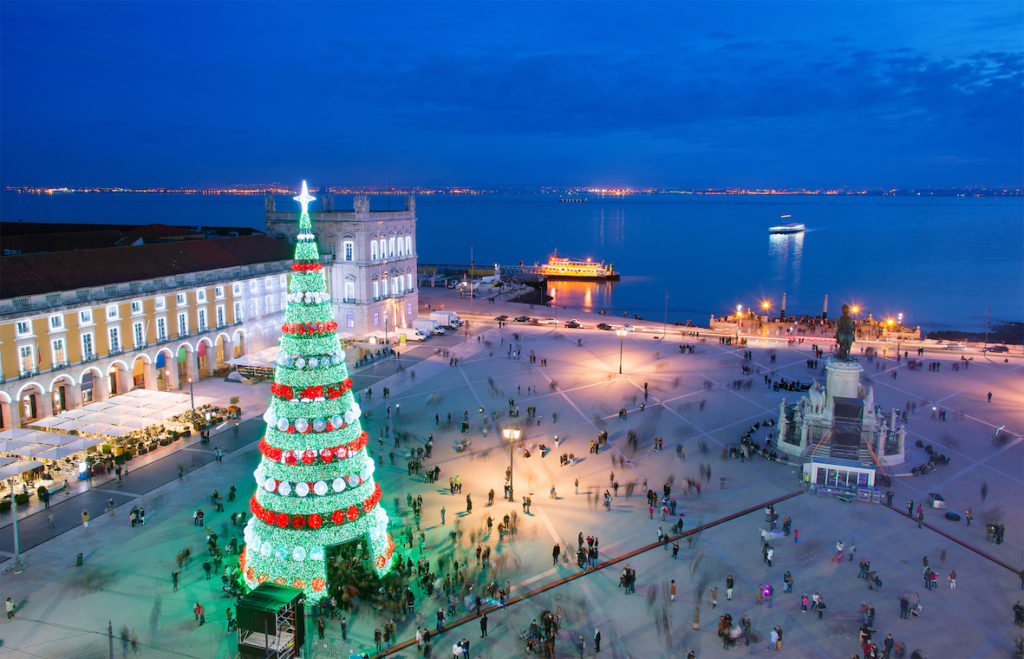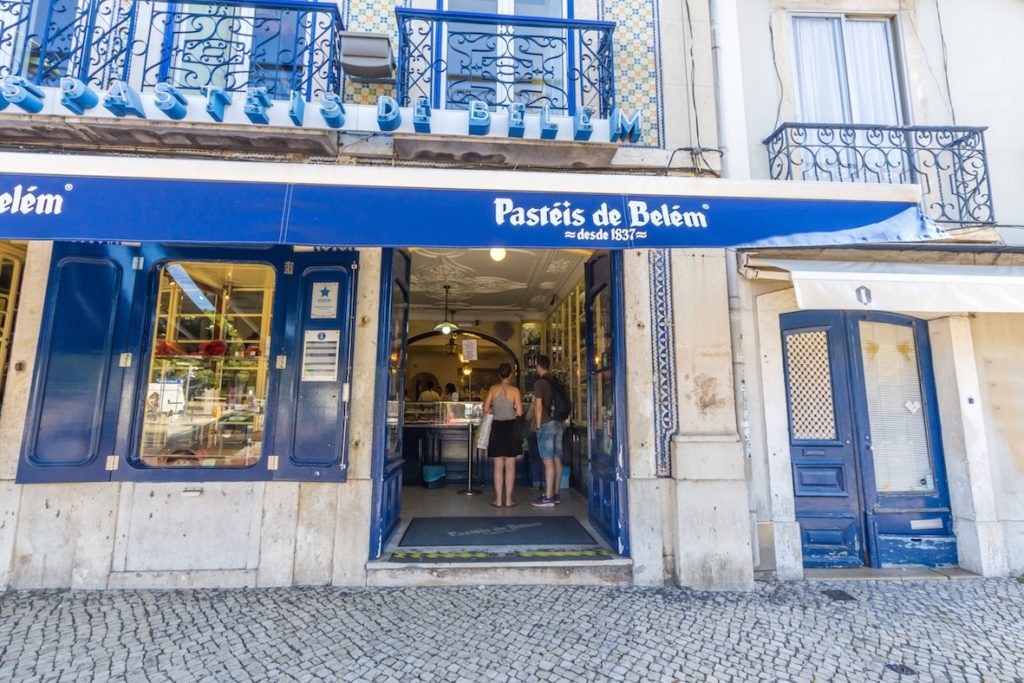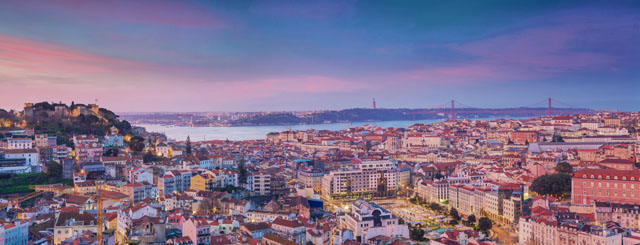Looking for a warm, holiday-friendly, walkable city in which to spend some of your December days? Consider Lisbon, Portugal, which also offers food, history, shopping, and beautiful views.
For many, Lisbon in December is love at first sight. From the airport, taxis plunge toward the city’s heart. Tangerine sunsets transform palm trees to black silhouettes while evening lights blink to life. Clean shopfronts gleam with tile, textile, soccer jerseys, gelato counters, kebap stands and a thousand other wondrous things.

Lisbon during the holidays
In central Lisbon, the towering white columns of the famous National Theatre sparkle with Christmas lights. Across the street, in Rossio Square, a ginger-scented cluster of wooden huts and temporary pines reveals Lisbon’s annual Christmas market. It may not be as vast as some of those in central Europe, but it’s still pretty awesome: the booths offer candy, hot drinks, Portuguese artwork, and dozens of other things that make for great gifts or souvenirs.
Lisbon also holds a remarkable blend of history, music, art, and culture. Crowds are scarce, prices are reasonable, the wine is bold, children are welcomed, English is widely spoken, and the desserts are sublime.
And in terms of doing cool stuff? You’ve got options.
Incredible buildings abound. The Castelo de São Jorge towers above Lisbon, is brilliantly lighted at night, and allows you to share space with strutting peacocks while surveying the city and harbor. The small town of Sintra is a short train ride outside of Lisbon, and is absolutely worth a day trip to visit the colorful Palácio da Pena and famous thousand-year-old Castelo dos Mourous.
Walkable Lisbon
Lisbon is also one of the most walkable cities in Europe, and has a variety of fascinating neighborhoods. Wandering the Alfama district — which is a maze of medieval alleys, fado bars, restaurants, and orange trees growing out of stone walkways — is like stepping into the age of explorers. Alfama stands in sharp contrast to the nearby Baixa district, where wide boulevards contain chic shops and fine restaurants.

If you want history, the Gulbenkian Museum houses a comprehensive and accessible collection that stretches from ancient Greece to the twentieth century. Or you can wander through Jerónimos Monastery and wind past tourists snapping photos of psychadelic stained glass until you reach Vasco da Gama’s tomb. As with many other places in Lisbon, you can stand face-to-face with the past and marvel at its resonance with the present.
Though Lisbon in winter can be rainy, visitors can also be treated to a week’s worth of sun and warmth. When the sun’s out, you get the crisp, clean smell of a sunny winter morning somewhere warm, like southern California or Florida. Winter in Europe rarely gets this good.
Four Lisbon Essentials
- Você fala inglês? Or, “Do you speak English?” in Portuguese. An essential question for seeking information or assistance. Though English is widely spoken, leading with the local language is a helpful practice.
- Viva Viagem card: If you’re planning to be in Lisbon without a car for more than a day or two, consider getting this public transportation pass. It is reloadable, and allows access to Lisbon’s excellent system of trains, buses, subways, and trolleys. Learn more at www.metrolisboa.pt/en/buy/viva-viagem-card.
- Fado: Literally meaning “destiny” or “fate,” fado is a sparse, beautifully melancholy form of traditional Portuguese music that has roots in lamenting sailors lost at sea. Live music can be found in fado bars abound in Lisbon, which are well worth a visit.
- Pastéis de Belém: Before you visit Jéronimos Monastery, stop at this world-famous eatery and enjoy a freshly-made pastel de Belém (or three). Your soul (and stomach) will thank you for it. Learn more at pasteisdebelem.pt/en.
Panoramic view of Lisbon — Cover Photo by Rudy Balasko / shutterstock.com
